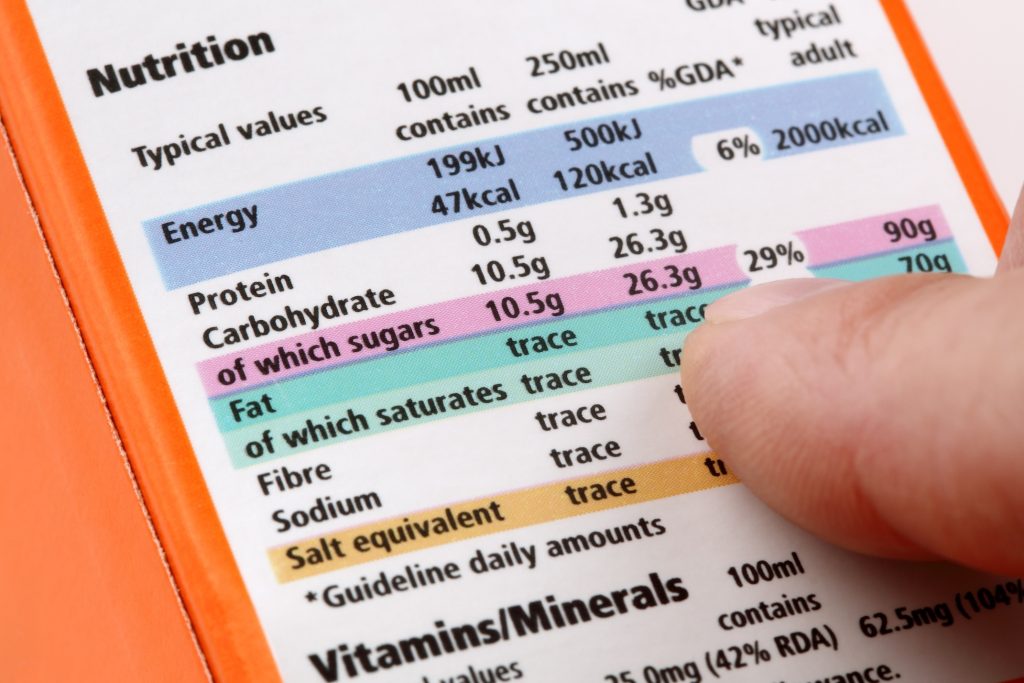EU legislation has long contained a basic provision that claims should not mislead the consumer. However, this general principal was open to different interpretations by Member States. These discrepancies between how different Member States defined the terms and conditions meant that it was difficult for this provision to actually protect consumer and public health and created barriers to proper functionioning of internal markets.
As a result, in 2006,the nutrition and health claims (NHC) regulation was published (Regulation 1924/2006/EC as amended) to protect consumers from misleading claims in the EU. This legislation establishes permitted nutrition and health claims for use on foods sold in the EU as well as associated conditions of use and restrictions (if any). As part of this legislation, nutrient profiles were to be established which would guide the use of NHC on foods. They would ensure that claims were not made on so called ‘unhealthy’ foods, setting limits for nutrients such as fats, sugars and salt in order for the product to bear a claim. However, it has been more than 15 years since this regulation was published and there is still not agreement on the exact nutrient profiles to be used. What barriers have caused this process to take so much time, when can we expect unified guidelines on nutrient criteria for claims and front-of-labelling, and how will it impact the food and beverage market?

Challenges and steps forward in setting unified nutrient profiles
Multiple, different nutrient profiling schemes are in use in different jurisdictions
Some jurisdictions have their own nutrient profiling schemes already, and they can differ by region. In Australia and New Zealand, certain nutrient requirements must be met in order for certain products to bear a claim. In Europe, there are different profiling systems in use which affect advertising. Although these do not guide nutrition and health claims on labels, they do create debate around which set of criteria would be best for that purpose. The WHO in Europe has designed a nutrient profile model for use by European governments for the purposes of restricting food marketing to children. A number of European countries (Denmark, Norway and the UK) have nutrient profile models for restricting marketing of foods to children which have been either developed by governments or (in the case of the Danish model) endorsed by government.
Agreeing on unified nutrient profiles in the context of the European legislation proved challenging, which significantly delayed their implementation. They were to be established by 2009 but it proved impossible for the European Commission and Member States to agree on a system. There were a number of reasons for this, including the fact that some food products which are included in national healthy eating guidelines would be excluded from bearing claims on the basis of the nutrients to be considered for profiling (e.g. cheese due to its high saturated fat content while being recognized as an excellent source of calcium). Furthermore, traditional foods in some countries could be excluded from bearing claims. For example, olive oil, a traditional food in many Mediterranean countries, would not be allowed to bear claims because of its high fat content even though it’s very high in unsaturated fatty acids compared to a lot of other vegetable oils.
The ‘Farm to Fork’ strategy will attempt to harmonise front-of-pack nutrition labelling
In the time between 2006 and 2020, numerous attempts were made by the European Commission to progress or at least evaluate the need for unified criteria through surveys with Member States, targeted consultations, and workshops and in 2020 the issue of nutrient profiles was elevated in priority as part of the ‘Farm to Fork’ strategy. The strategy announced that ‘to promote sustainable food consumption and facilitate the shift to healthy and sustainable diets, the Commission will adopt measures to empower consumers to make informed, healthy and sustainable food choices.…. The strategy further announced that to stimulate sustainable food processing and reformulation but also to facilitate the shift to healthier diets, the Commission will set nutrient profiles to restrict the promotion (via nutrition and health claims) of foods high in fat, sugars and salt’.
As part of the ‘Farm to Fork’ initiative, the Commission made a request to EFSA for scientific advice on the development of harmonised mandatory front-of-pack nutrition labelling (FOPL) and the setting of nutrient profiles for restricting nutrition and health claims on foods. The European Commission also published an inception impact assessment to cover the topics of front of pack labelling and nutrient profiles (among others).
When can we expect agreement on nutrient profiles, and what impact will it have on the food and beverage industry?
In November 2021, EFSA published a draft opinion advising on the development of nutrient profiles, aiming to inform nutrient profiling modelling. They have not yet evaluated or proposed a model. The draft opinion defines the criteria that could guide the choice of nutrients (including non-nutrient components of food, e.g. energy, dietary fibre) for the nutrient profiling of foods. The opinion takes into account the nutrients called out in the legislation (i.e. fats, salt, sugars) but also nutrients which are inadequate in specific population groups e.g. iron, calcium, vitamin D, folate, iodine and potassium. It also advises on scientific considerations regarding nutrients of public health importance for European populations, food groups which have an important role in the diets of European populations and considers national food based dietary guidelines. This should ensure a much more robust system for the creation of nutrient profiles.

The final EFSA opinion should be published by the end of March 2022, and the establishment of nutrient profiles could result in the need for reformulation for certain food and beverage manufacturers and is likely to result in changes in labelling for many. While it is not currently foreseen to propose a nutrient profile model, it will inform the European Commission’s dialogue on creating new legislation on nutrient profiles. This EFSA opinion and the consideration of more rounded nutrition science should ensure a more robust discussion on the setting of nutrient profiles between the European Commission, Member States and stakeholders (including the food industry). Following this dialogue, it has been suggested that the legislation establishing nutrient profiles in the EU should be adopted by the end of 2022.



